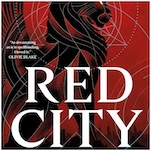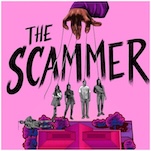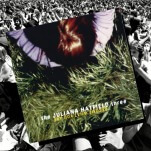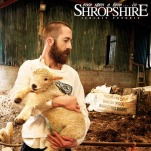The Curmudgeon: Christmas Albums—The Good, The Bad & The Weird
Nobody takes Christmas records seriously, and that’s why I love them. Record companies don’t care if there’s a single on a Christmas album, because holiday songs rarely chart, but holiday albums can be an annual cash cow. Critics and fans view them as footnotes to an artist’s “real career,” so they don’t expect a major statement. It’s as if artists have been given a pass from the usual expectations and can do whatever they want.
A lot of acts use that as an excuse to just go through the motions on the obligatory Christmas album. A majority of such records are lifeless, lackluster exercises in sentimentality. But a significant minority are unexpected delights, often because the artist has used it as an excuse to step outside a carefully nurtured career persona and try something else.
The most exciting, most cohesive album that Phil Spector ever produced, for example, was 1963’s A Christmas Gift for You from Philles Records, now marketed as A Christmas Gift for You from Phil Spector. For once freed from the self-imposed pressure to create hits, the producer was able to craft one of rock’s best-ever concept albums.
When Brian Wilson was organizing The Beach Boys’ Christmas Album in 1964, he wrote five terrific pop-rock numbers for the project and then used the seven remaining slots to do traditional carols in the pre-rock style of his adolescent heroes, the Four Freshmen. Wilson even hired the Freshmen’s arranger Dick Reynolds to do the orchestral charts. The result was out-of-date but wonderful harmony crooning that the Beach Boys could never have gotten away with on a non-Christmas album.
A similar freedom from thinking about hits allowed Elvis Presley to record the sexiest, bluesiest music of his career on the nearly eight-minute version of “Merry Christmas, Baby.” The full 1971 version was finally released on the 1982 album Memories of Christmas. The song was first sung by Charles Brown (who may also have written it, though the credit went to his bandleader Johnny Moore). Brown also sang (and wrote) “Please Come Home for Christmas.” Never has an artist been better served by the December holiday.
Aaron Neville had constructed a successful solo career as an MOR crooner when he decided to take a detour on his 1993 release, Soulful Christmas. Casting aside the serious dignity of his regular career, he sang like the funky, mischievous New Orleans singer he’d been as a young man. It ended up being the best solo album he ever made.
Something similar happens on this year’s A Mary Christmas, by Mary J. Blige. She has worked hard to define herself as the tough-as-nails survivor of the streets, belting out R&B manifestos over hip-hop tracks. But this is a Christmas album, right? Why not reveal her hidden selves? Backed by an orchestra and/or big band, she proves she can swing like a jazz vet or warble with the understatement of a singer-songwriter. Even more surprisingly, she displays a tender sensibility that she usually keeps under wraps.
Blige possesses one of the great voices of her generation, and here she proves that it can do a lot more than anyone ever suspected. Who’d have thought she could sound like the second coming of Patti Labelle? We might never have known except for safety valve known as the Christmas album.
One of the downsides of the current pop-music star system is the prison cell of the stage persona. Yes, it is easier to market an act if you define that act as a particular personality with an identifiable sound. This makes it easier for the casual listener to identify a performer. Mary J. Blige? Oh yeah, tough woman from the streets with a big voice and a hip-hop flavor. That’s why managers and record companies like specific personas.
But it’s not such a great deal for non-casual listeners and the artists themselves. No human being is just one thing; we are bundles of contradictions and oddball interests. The serious music fan wants to hear all of that from a favorite artist, but often it takes a non-standard vehicle, such as a Christmas album or a tribute record, to reveal the sides of an artist that lie outside the stage persona’s parameters.
When Blige finishes belting out an old-fashioned jazz big-band version of “Rudolph the Red-Nosed Reindeer,” she shouts, “Man, that was fun!” It sounds like she means it, as if the chance to step outside her usual territory were a tremendous relief. When she sings “Have Yourself a Merry Little Christmas,” she begins so quietly, almost conversationally, that she seems more approachable than she ever has before. The song’s narrator sounds as if the slim hope for a Merry Christmas is all she can hope for after a year of defeats.
-

-

-

-

-

-

-

-

-

-

-

-

-

-

-

-

-

-

-

-

-

-

-

-

-

-

-

-

-

-

-

-

-

-

-

-

-

-

-

-








































